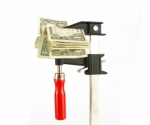![]() Today we have a special guest with us, Esteban Kolsky. Esteban is a VP at KANA where he is very focused on great customer experiences, especially in the area of customer service. He is also an active commenter here on Customers Rock!, so please welcome him and enjoy the post!
Today we have a special guest with us, Esteban Kolsky. Esteban is a VP at KANA where he is very focused on great customer experiences, especially in the area of customer service. He is also an active commenter here on Customers Rock!, so please welcome him and enjoy the post!
Five Winning Strategies to Excel at Customer Service via Email
Back in the “early” days of the internet (read 1990s) we all thought that email was going to revolutionize the way we do customer service. Customers were going to send us all their questions and inquiries via email, which in turn was going to be answered within a few minutes – either automatically through a software package or manually by knowledgebase-assisted engineers. This setup was going to do away with the need to use telephones and call centers (after all, emails can be answered from anywhere), and reduce the cost for customer service.
Fast forward 15-20 years and it seems to be not where we thought it would be. Alas, we did try using email as much as possible yet the results were not as expected: automation was harder than we expected, customers did not like the speed of response (which was down to days in some cases, and non-existent in others), and transactions completed via email were not similar to transactions completed via the phone. This slow realization of the problems of using email for customer service made the adoption slow down almost to a trickle – pushing customer service automation via email to the point of extinction.
So where are we today? After 2-3 years of very painful experimentation and working in the lab, we are beginning to discover how to use email properly for customer service. There are over two dozen best practices and lessons learned that anyone starting to implement email for customer service would do well to read and understand before starting. However, the following five are the top sure-fire ways to get customer service email to work well in your organization:
1. Classification – customers tend to ramble in free-form emails, posing questions somewhere in the middle of long sentences or paragraphs. That makes it almost impossible for parsing engines to identify the inquiry within the email. Eliminate free-form emails in favor of web-based forms with drop-down menus to allow customers to send emails. You can create a unique answer for each unique combination possible, or a workflow to gather more information or open a ticket if needed. Knowing what customers are asking, what are the variables or terms more often used also assist in improving the knowledge-base.
2. Automation – customer service emails, as with phone-based inquiries, follow an 80-20 rule: 80 percent of the questions can be answered with 20% of the content available. However, with the constraints of email as a communication medium (complex, oddly-written messages, lack of interactivity for clarification or expansion of data), the 20% gets reduced very rapidly to around 5% of content that can be properly expressed through email. Alas, still it can answer a large number of incoming interactions automatically, greatly reducing the dependency on agents to answer those emails, and improving the speed of response for customers. Identifying that 5% of content and questions, creating the specific rules and deploying it can greatly improve the experience for customers, and create a fertile lab for organizations to discover more and more interactions that can be automated.
3. Integration – the best way to add value to an email response is to provide the customer with personalized, custom information that matches the customer intent when writing in. If they want to know the status of their order, don’t send them a link to the page where they can get it – send them the information. This is impossible to do unless the ERMS and the data stores and applications are integrated. In some cases, this integration is done directly and the data flows are controlled via business rules. In others, the integration happens through an existing application feeding data back to the ERMS. In either situation, the customer feels as if the system has been custom-made for their needs increasing satisfaction.
4. Maintenance – the quintessential secret to having a powerful customer service solution via email is the maintenance of the solution. This is nothing new; we learned how to do this while deploying our knowledge management solutions. Yet, email has a complicated set of business rules and workflows that must be maintained. Even if you support a centralized model for knowledge management, the email-specific components still carry a heavy load of maintenance. You could streamline the maintenance by deploying a centralized rules server across channels. Alas, as it is with knowledge, business rules and workflows get outdated as soon as they are deployed – making maintenance THE way to manage the content properly. The mid-life of an improperly maintained ERMS is very short, usually not passing a couple of months before customers stop using due to poor results.
5. Marketing – similarly, marketing is the secret to growing the adoption of email among your customers and within your organization. Customers don’t know you offer a specific solution unless you tell them about it, and they understand the benefits they can get out of it. Your organization does not understand the great job your email solution has done for you unless you tell them about it. Advertise your solution. Extol its benefits. Announce the availability of new and upgraded features. Create a killer marketing plan, target the right people to know about it, and distribute the information.
Where are you with the use of email in your organization? Are you an early and satisfied adopter? Or are you intrigued by the promise?
About the Author
Esteban Kolsky has over 20 years of customer service, market research, and technology experience. As Vice President and Practice Leader for KANA, Mr. Kolsky delivers strategic consulting, systems integration and managed services programs designed to help KANA customers deliver exceptional service experiences. Prior to joining KANA Software Mr. Kolsky was with Gartner where he built and managed both the eService and Enterprise Feedback Management practices. He has been featured in television and radio, and quoted in over 400 publications around the globe as an industry watcher and commentator.
(Photo credit: © Yannis Ntousiopoulos | Dreamstime.com)

















